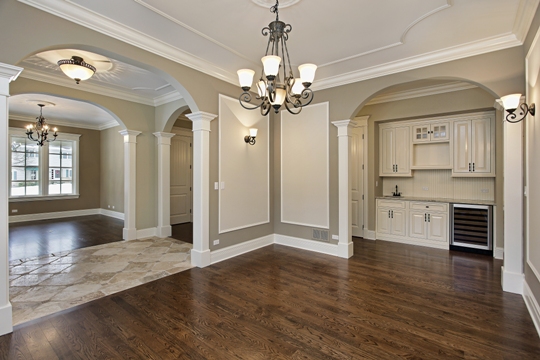
A Fresh Start: Painting the Interior Trim in Your Home
The trim in your home plays a subtle yet vital role in enhancing its overall aesthetics. Often overlooked, a fresh coat of paint on the trim can breathe new life into your living spaces. Whether you’re aiming to rejuvenate the existing trim or looking to change the color scheme, painting your trim can be a rewarding DIY project. Painting your interior trim is easy of you know how. Here’s a step-by-step guide on how to paint the trim in your home.
Materials You’ll Need:
Before diving into the project, gather the necessary materials:
- Paint: Choose a high-quality trim or semi-gloss paint in the desired color. Consider the existing room decor and color scheme when making your choice.
- Primer: A good quality primer ensures better adhesion and a smoother finish. Opt for a primer specifically designed for trim.
- Paintbrushes: High-quality brushes with fine bristles are essential for a professional-looking finish. A 2-inch angled brush is ideal for trim.
- Painter’s Tape: Use painter’s tape to protect adjacent surfaces, like walls and floors, from accidental paint splatters.
- Sandpaper: Sandpaper with a grit of 120 to 220 will help smooth out imperfections on the trim’s surface.
- Drop Cloths: Lay down drop cloths to protect your flooring from paint spills.
- Cleaning Supplies: Gather soap, water, and a sponge or cloth for cleaning the trim.

Step 1: Prepare the Room
Start by clearing the area around the trim. Remove furniture or cover it with drop cloths to protect it from paint splatters. Remove any obstacles that might hinder your access to the trim.
Step 2: Clean the Trim
Dirt and dust can prevent paint from adhering properly. Clean the trim thoroughly using soap and water. Let it dry completely before proceeding.
Step 3: Remove Hardware
If your trim has hardware such as knobs, handles, or plates, remove them to ensure an even finish. This step is optional but can make the job easier and give a more professional result.
Step 4: Sand the Trim
Lightly sand the trim with fine-grit sandpaper. This step helps the paint adhere better and smooths out any imperfections on the surface. After sanding, wipe away any dust with a clean, damp cloth.
Step 5: Apply Painter’s Tape
Carefully apply painter’s tape to the edges of the trim, ensuring it’s properly adhered. This will protect the surrounding surfaces from accidental paint splatters.
Step 6: Prime the Trim
Apply a coat of primer to the trim. Primer helps the paint adhere better and provides a consistent base for your paint color. Allow the primer to dry according to the manufacturer’s instructions.
Step 7: Paint the Trim
Once the primer is dry, it’s time to apply the paint. Dip your high-quality brush into the paint and remove excess paint by tapping it against the edge of the can. Paint with smooth, even strokes, following the natural grain of the wood. Apply a second coat if necessary after the first coat has dried completely.
Step 8: Remove Painter’s Tape
Remove the painter’s tape carefully while the paint is still slightly wet to avoid peeling or chipping the paint.
Step 9: Let It Dry
Allow the paint to dry thoroughly. This may take a few hours to a day, depending on the type of paint and environmental conditions.
Step 10: Reattach Hardware and Clean Up
If you removed any hardware, reattach it to the trim once the paint is fully dry. Clean your brushes and tools with soap and water or according to the manufacturer’s instructions for your specific paint.
With a fresh coat of paint on your trim, your home will look more vibrant and well-maintained. It’s a small but impactful DIY project that can make a big difference in your home’s overall appearance. So, roll up your sleeves and get ready to enjoy the satisfaction of a job well done.
Links on this page may be affiliate links. We may earn a small commission when readers click a link and make a purchase.
Check Out Our Other Articles
Share This!

Weird Things On Amazon






